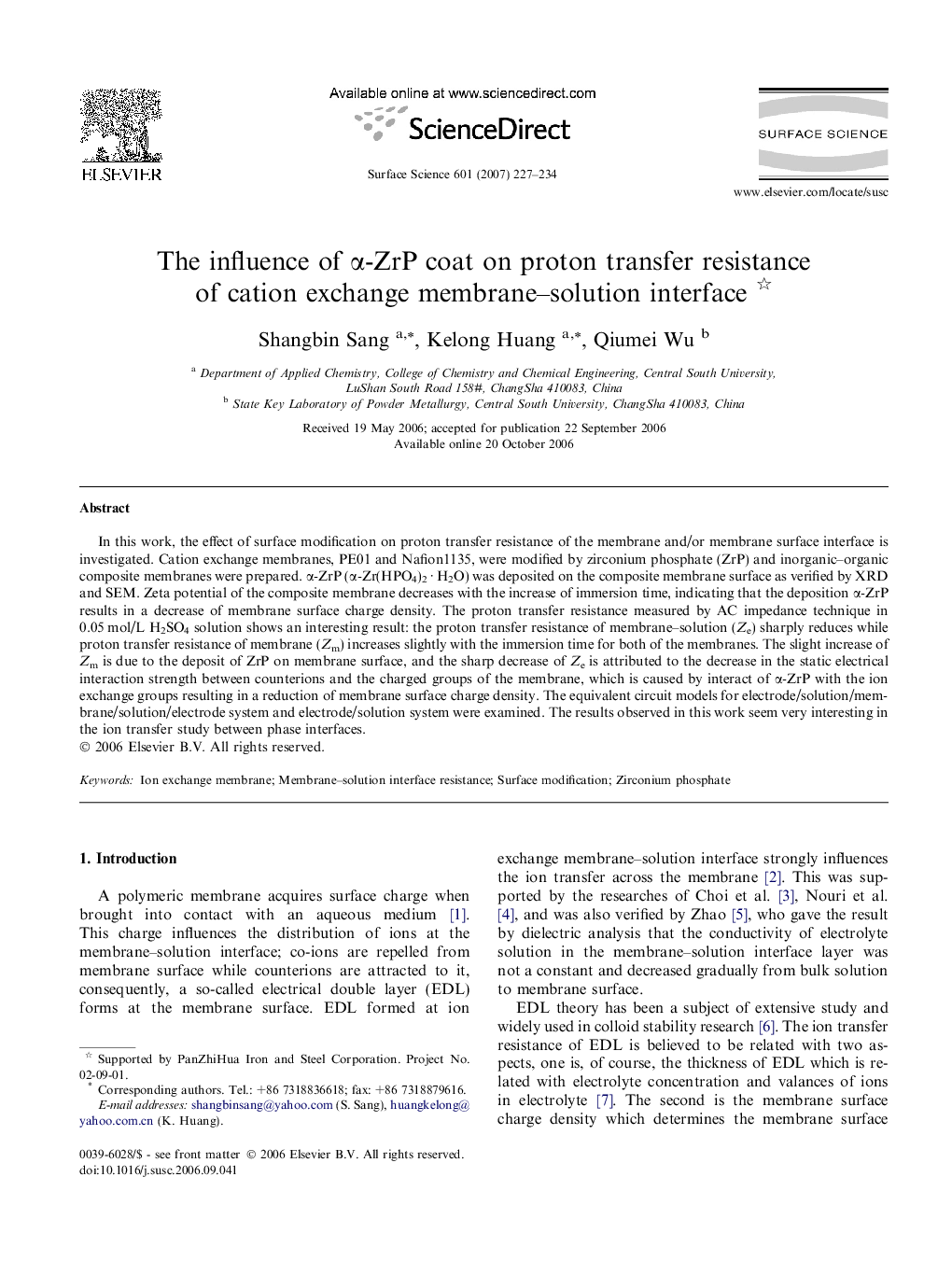| Article ID | Journal | Published Year | Pages | File Type |
|---|---|---|---|---|
| 5426247 | Surface Science | 2007 | 8 Pages |
In this work, the effect of surface modification on proton transfer resistance of the membrane and/or membrane surface interface is investigated. Cation exchange membranes, PE01 and Nafion1135, were modified by zirconium phosphate (ZrP) and inorganic-organic composite membranes were prepared. α-ZrP (α-Zr(HPO4)2 · H2O) was deposited on the composite membrane surface as verified by XRD and SEM. Zeta potential of the composite membrane decreases with the increase of immersion time, indicating that the deposition α-ZrP results in a decrease of membrane surface charge density. The proton transfer resistance measured by AC impedance technique in 0.05 mol/L H2SO4 solution shows an interesting result: the proton transfer resistance of membrane-solution (Ze) sharply reduces while proton transfer resistance of membrane (Zm) increases slightly with the immersion time for both of the membranes. The slight increase of Zm is due to the deposit of ZrP on membrane surface, and the sharp decrease of Ze is attributed to the decrease in the static electrical interaction strength between counterions and the charged groups of the membrane, which is caused by interact of α-ZrP with the ion exchange groups resulting in a reduction of membrane surface charge density. The equivalent circuit models for electrode/solution/membrane/solution/electrode system and electrode/solution system were examined. The results observed in this work seem very interesting in the ion transfer study between phase interfaces.
